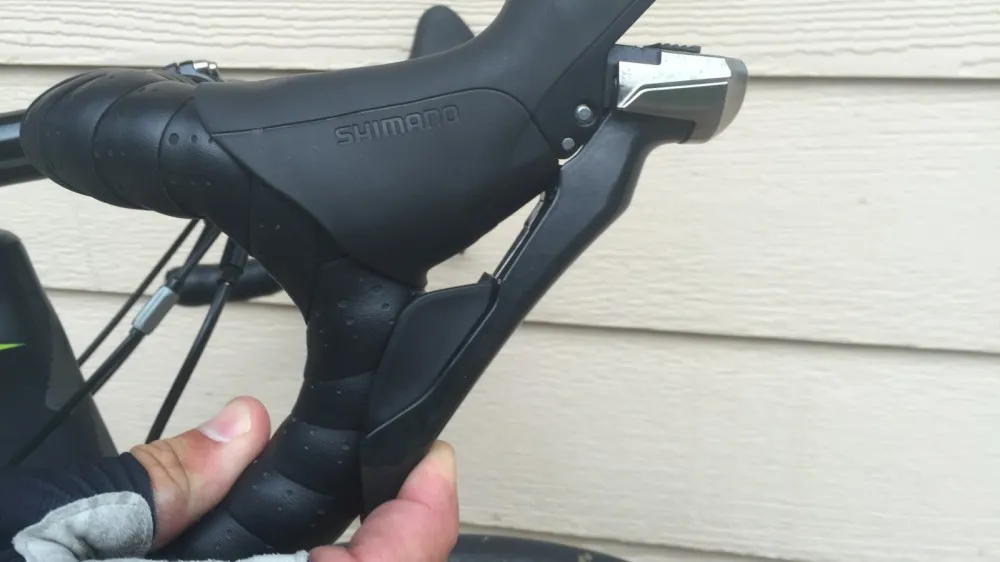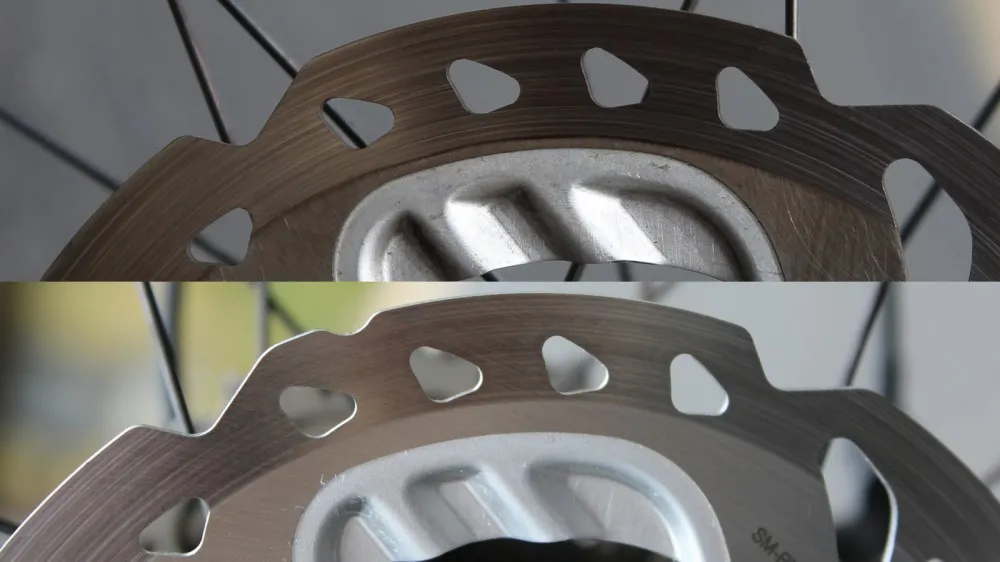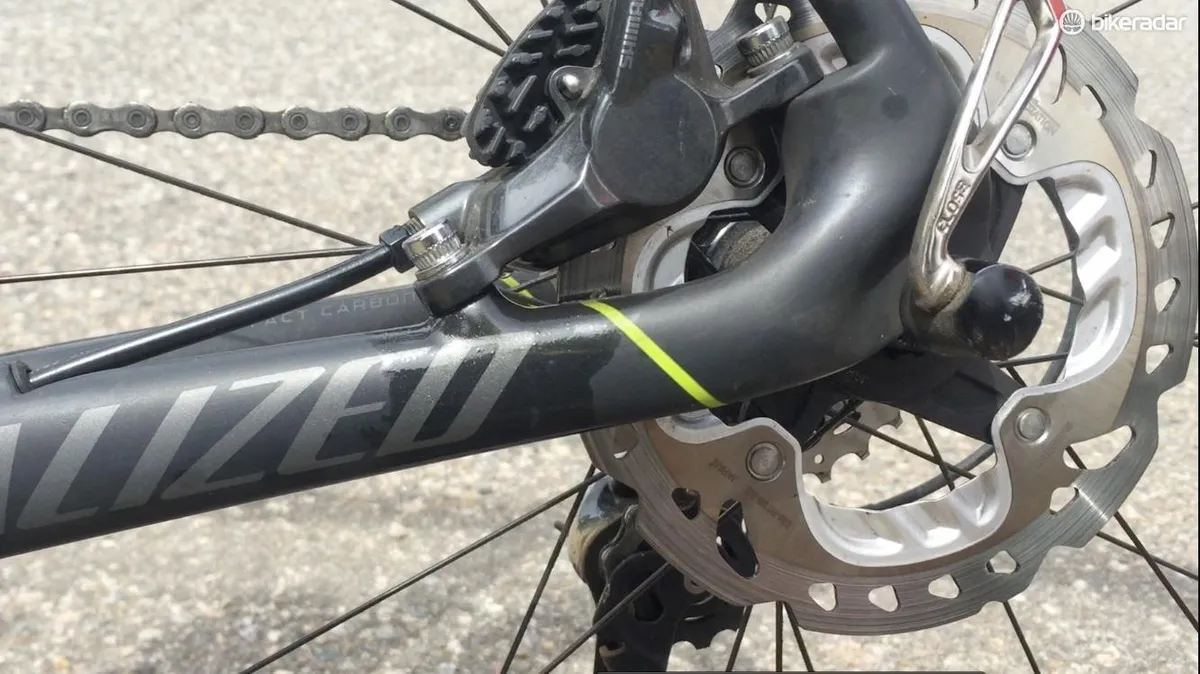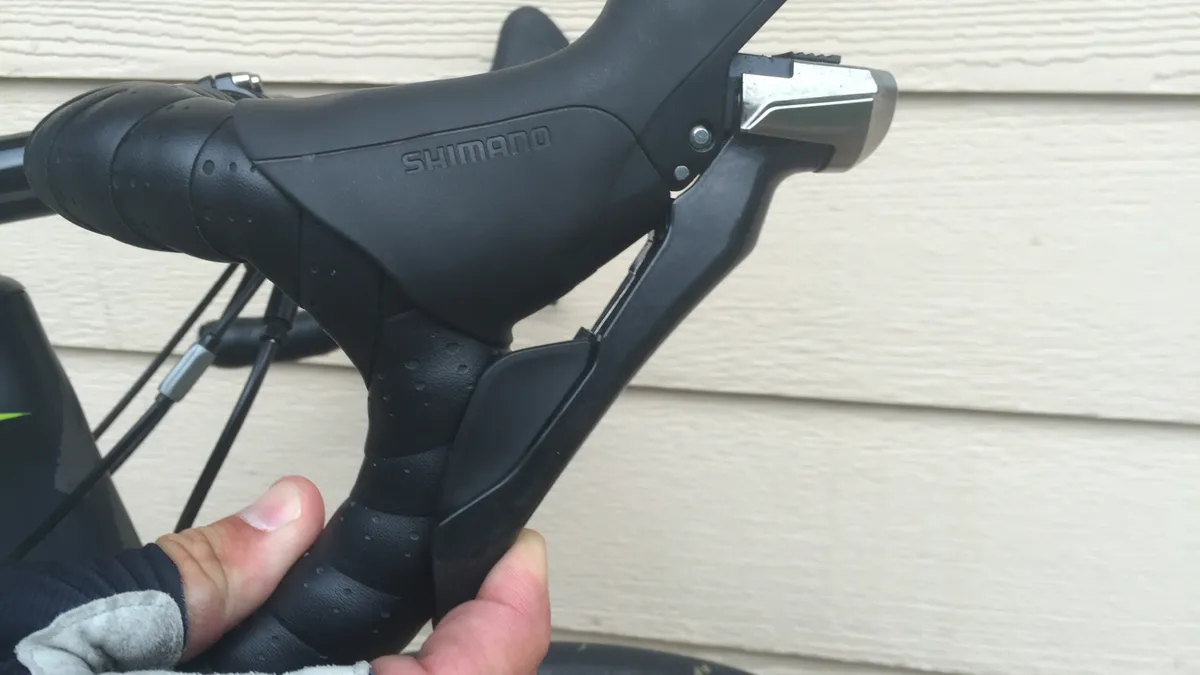On a recent long ride in the Colorado mountains, the rear Shimano R785 hydraulic brake failed on the road bike I was riding as I was descending from 12,000ft to 9,000ft on a -5% paved road in traffic. Not what anyone wants to happen to them.
The rear brake lever felt mushy for a minute or two, then lost all power. Oil had leaked out of the caliper, but it wasn’t clear what caused the leak. Shimano retrieved the caliper, the attached hose line and the rotor to diagnose the situation, and determined that the right ceramic piston had cracked, allowing oil to leak out and causing the brake to lose function.
Read a full description of the particular ride here, with photos and a 3D elevation chart.
Video: how to kill a shimano disc brake (from 1:47 in…)
I was riding a Specialized Tarmac Pro Disc test bike with Shimano 685 levers and R785 calipers with 140mm RT-99 Ice Tech rotors front and rear, with stock Ice Tech pads that have the cooling fins. This test bike came from Specialized via a shop, and had been used before. I had been riding the bike for approximately a month — including on many long descents — before the oil leak occurred.
The day of the incident, both brake levers felt normal for the first half of a 150mi ride, with both brakes functioning normally, as they did for the prior month of testing.
I could get the discs to squeal on really steep, really tight descents sometimes, but always with perfectly dependable performance. I had not crashed or dropped the bike, so there was no external damage to the rear caliper or brake line. I had not changed the brake pads, but I don’t know what work had or had not been done on the bike before I received it.
I weigh 185lb/84kg and the descent wasn't insignificant with heavy traffic requiring more braking than I would have liked, but the weight and the braking are both well within Shimano's normal parameters.

In a matter of a minute or two, my rear brake went from feeling spongy to going out completely
The brake pads and the rotor appeared normal before and after the oil leak.
I contacted Shimano after the ride, and the company retrieved the hose and caliper intact for inspection within a few days. They asked me to hold this story until they had time to take a careful look at the brake – which I agreed to. Also at Shimano’s request, I did not disassemble the brake before retrieval. I have asked Shimano to return the caliper or at least send me photos of the cracked piston.
Shimano has now provided me with the following prepared response, but declined to discuss the situation with me. Below the statement are some questions I would like to ask Shimano, along with some feedback from Specialized regarding the placement of the caliper on the frame.
Statement from Shimano American road product manager Dave Lawrence:
“We are very sorry for the oil leak and trouble it caused on your ride.
Upon receipt of the sample we did a detailed study and would like to share our investigation and thoughts.
• Cause of trouble
Oil leak caused by a crack in right side piston.
From the actual sample we studied and tried to determine the cause.
A cracked piston caused the oil leak. We have concluded that the crack was not caused by heat generated while braking on the downhill. We didn't see any evidence of high temperature on the returned caliper and pads.
• Other possible cause of the crack in the piston
On the returned sample we observed that the disc pad contact to the rotor was slightly higher. We have made several machine and riding tests in similar conditions, and we have not been able to replicate similar damage to the piston.
This theory has not been ruled out, but we will continue to investigate to find the root cause.
• Few more comments
Again, we are sorry for the trouble you experienced with this brake caliper. This is a rare occurrence for us, we will continue to study for further refinement and improvement.
We always recommend that you inspect your braking system prior to riding. Disc brake system trouble may start to appear as a spongy feeling at the brake lever. A visual check of pad wear, contact of the pad to the rotor, and motion of piston are all recommended. If you experience any problems we recommend you seek professional service at a bike dealer.”
Unanswered questions
Here are the primary questions I have at this point, and would like to pose to Shimano:
- What could cause a ceramic piston to crack?
- Could surface damage to a piston that doesn’t initially result in oil leak lead to a cracked piston through the heat and pressure of sustained braking?
- Could someone have damaged the piston by using a screwdriver or another metal object to retract the pistons during a brake-pad change?
- What does the cracked piston look like? Would you please return the caliper and/or send me pictures?
- How many other cracked pistons of this R785 or M785 caliper have you seen?
- How exactly is the piston on the XTR caliper different from the R785/M785 (XT) caliper? Why isn't this used on the R785?
- How are riders supposed to check the quality of their brakes’ pistons?
For Specialized’s part, the company retrieved the test bike and measured the caliper placement on both the test bike and many others. The caliper placement on the test bike was within Shimano’s outlined parameters, Specialized representatives said.
Looking at the pad marks on the front and rear rotors, you can see there is a slight difference. I went back and looked at other test bikes with discs, and found a couple to have similar discrepancies in the width of pad engagement. On one bike, a BMC GranFondo GF01 that I tested this spring, I found that the very top section of the brake pads had not contacted the rotor and thus did not wear down. This affected section was maybe 1-2mm of the total brake pad. I did not experience anything abnormal with the braking on that bike.

The brake pads sat further down on the front caliper (above) than the rear (below), but not by very much
Because I did not receive a brand new bike, I do not know what if anything was done to the caliper and/or pistons before I rode the bike. This complicates the analysis.
BikeRadar has not heard of other R785 pistons cracking, but there are incidents to be found in forums of cracked M785 pistons, which are essentially the same thing.
If and when Shimano responds with more information, I will update this story and we will republish. If any readers have had a similar experience with a cracked piston on a road or a mountain bike, I would be eager to hear about it.
Several friends and colleagues have asked whether this shook my trust in Shimano’s hydraulic discs. I’ll put it to you like this: after checking the bike, I continued the ride and descended another 5,000 or so feet, putting my trust in the front brake.
That said, I am curious about what could cause a ceramic piston to crack, and what riders like you and I should know or do to avoid it happening, as there is certainly no roadside fix for an issue like this.






